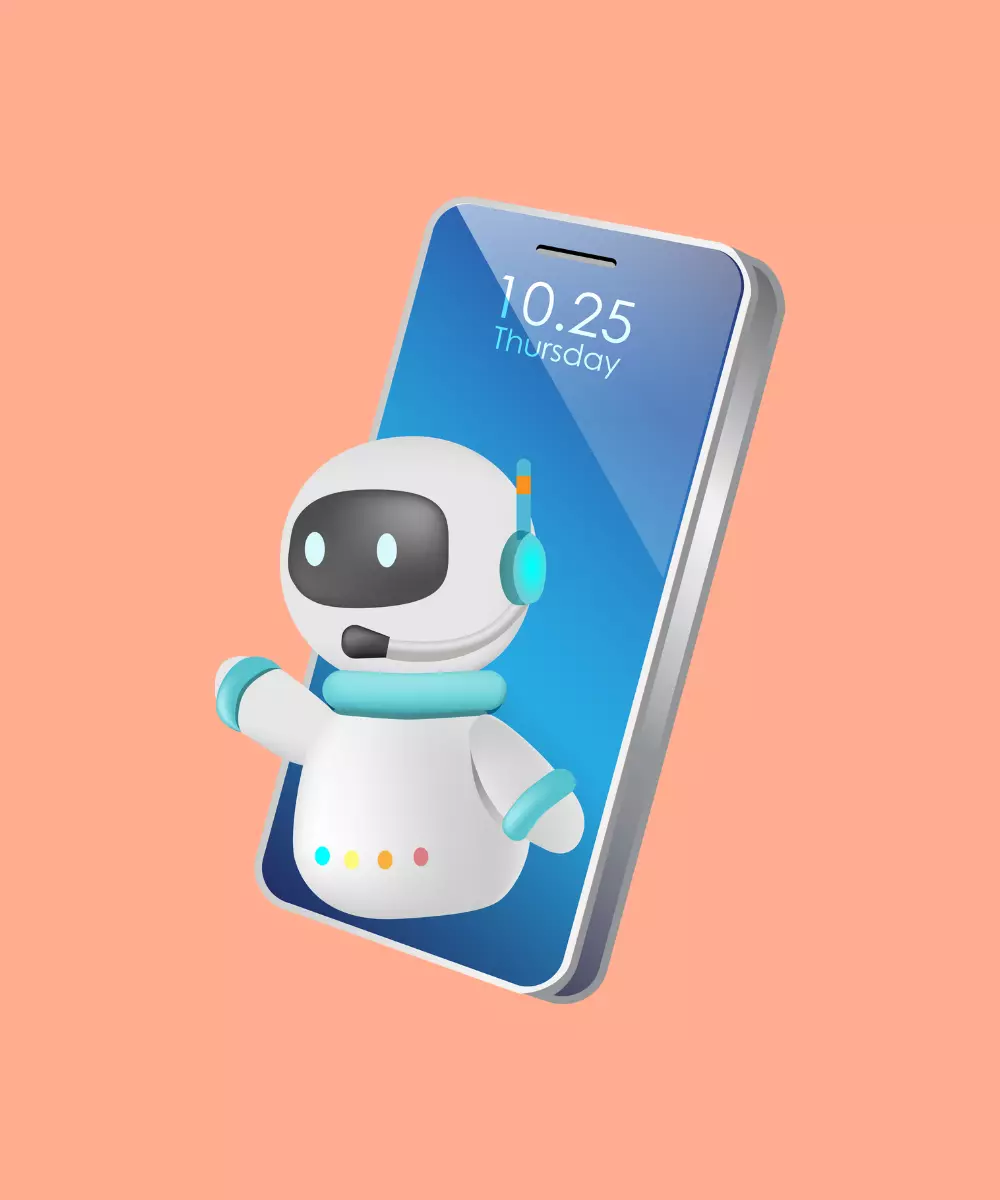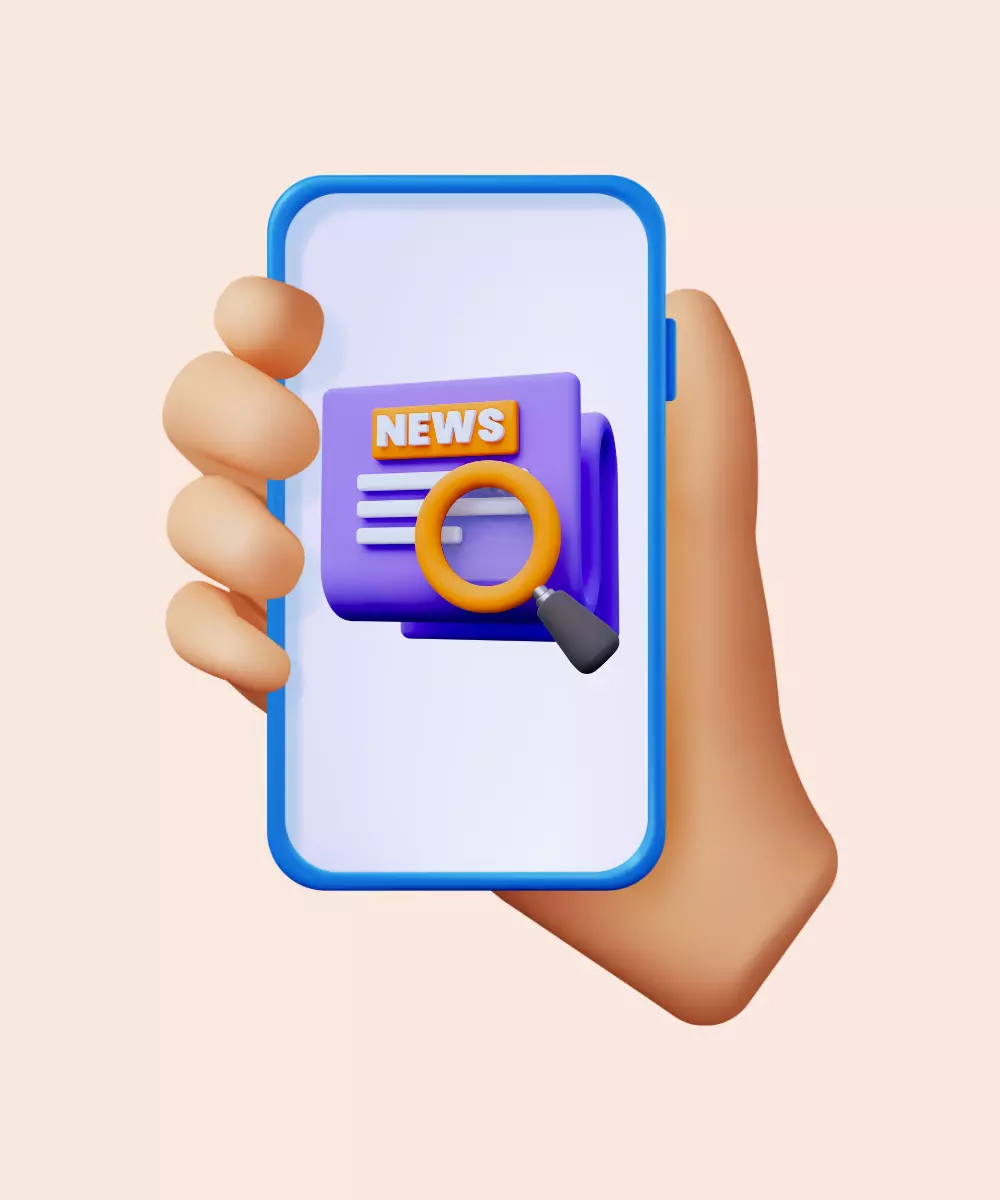In the era of digital transformation, the way we consume news has seen a dramatic shift. Traditional newspapers and television broadcasts, once the backbone of our daily news intake, are gradually giving way to the rapid, on-the-go, and personalized world of mobile news apps. This transformation is not just a trend but a reflection of society's evolving consumption patterns, driven by technology and accessibility. As we transition into 2024, the technological landscape, characterized by advancements in AI, AR, and personalization algorithms, is further revolutionizing this sector.
This guide is crafted for those intrigued by the potentials of news app development in 2024. Whether you're an entrepreneur eyeing the news market, or simply someone curious about the future of news apps, we will walk you through the intricacies of the domain, shedding light on market trends, essential features, challenges, and more.
Market Analysis: News App Landscape in 2024
As 2024 unfolds, mobile news apps are establishing an undeniable foothold. With over 3.8 billion smartphone users globally, there's a colossal market to cater to. Especially noteworthy is that 70% of Gen Z and Millennials now predominantly access news through digital means.
The evolving consumer habits are evident: 84% of users express a preference for real-time news updates over traditional scheduled broadcasts. In response, news apps are innovating to offer hyper-personalized feeds, with data showing that 62% of readers are more likely to engage with news tailored to their interests.
Diversification is another trend, as 56% of users in 2024 prefer multimedia content in their news, be it videos, infographics, or podcasts. Concurrently, there's a surge in demand for hyperlocal news, with 48% indicating a higher interest in localized stories.
However, the digital space isn't without its challenges. With the rise of misinformation, 73% of users in a recent survey expressed a growing concern about the authenticity of news. Apps that emphasize rigorous fact-checking and establish transparent sources are seeing a 30% higher trust rating from their user base.
Types of News Apps
As the digital realm continues to expand, news apps have evolved to cater to various audience preferences and consumption habits. Understanding the different types of news apps can help developers, publishers, and users make informed decisions. Here's a breakdown of the primary categories:
Aggregator news apps
These apps pull news from various sources and present them in a consolidated format. They're ideal for users looking to get a broad overview without having to jump between different platforms.
Example: Feedly is a popular aggregator that allows users to customize their feeds based on interests and preferred publications.
Traditional media apps
These apps belong to longstanding news institutions that have made the transition from print or broadcast to digital. They combine their legacy of reliable journalism with the advantages of mobile technology.
Example: The New York Times app offers in-depth reporting and multimedia storytelling, drawing from its rich journalistic history.
Independent news apps
These are often started by individual journalists or new-age media companies. They might focus on niche topics or provide alternative viewpoints not commonly found in mainstream media.
Example: The Intercept is an independent platform that emphasizes investigative journalism and offers its app for a mobile-optimized experience.
Local news apps
Catering to community-specific or regional audiences, these apps provide updates on local events, governance, weather, and more. They're essential for users interested in what's happening in their immediate surroundings.
Example: Patch is a platform dedicated to local news and community happenings across various US cities.
Topic-centric news apps
These apps focus on specific areas of interest, be it technology, health, sports, or entertainment. They cater to audiences who want in-depth coverage of particular sectors.
Example: TechCrunch keeps tech enthusiasts updated with the latest in the industry, from startups to big tech revelations.
Interactive news apps
Pushing the envelope of traditional news presentation, these apps use interactive graphics, AR/VR elements, and user-driven narratives to provide a more immersive experience.
Example: Al Jazeera's AJ+ offers a unique blend of news storytelling with interactive features, appealing to a younger demographic.
Key Features to Include in News Apps
News apps have come a long way from being just digital replicas of newspapers. In this digital age, there are several essential features that a news app must incorporate to stand out and provide users with a seamless news consumption experience. Here's an overview of these indispensable elements:
- Personalized feed: Leveraging machine learning and AI, modern news apps should be capable of curating content based on user preferences, reading history, and behavior. This ensures that readers are presented with stories that align with their interests, increasing engagement and time spent on the app.
Example: Google News uses AI to organize headlines and presents a "For You" section tailored to individual users.
- Push notifications: Real-time notifications ensure that users are instantly updated about breaking news or developments in stories they're following. It's crucial, however, to strike a balance to avoid overwhelming users with frequent notifications.
Example: BBC News app offers customizable notifications, allowing users to choose the kind of news they want to be alerted about.
- Offline reading: Given the occasional connectivity issues or data-saving needs, offering an offline reading mode can enhance user experience. This allows users to save articles and read them without an active internet connection.
Example: Pocket lets users save articles from any publication and access them offline.
- Multimedia integration: A modern news app should support various content formats - from text and images to videos, podcasts, and infographics. This multimedia approach ensures that users can choose their preferred mode of content consumption.
Example: The CNN app offers a blend of articles, videos, and photo galleries for a comprehensive news experience.
- User comments and interactions: Providing a platform for users to comment, share opinions, or even interact with journalists can foster community engagement and make news consumption more interactive.
Example: Guardian's app often features journalist Q&A sessions in the comments, bridging the gap between readers and reporters.
- Search and filter options: With the abundance of news, an effective search mechanism with filtering options based on categories, date, or relevance ensures users can easily find the stories they're interested in.
Example: Reuters offers a robust search function, making it easier for users to navigate its extensive news database.
- Dark mode and reading comfort: Considering the varied reading habits, offering features like dark mode, adjustable font sizes, and background colors can significantly enhance reading comfort.
Example: Medium's app provides readers with multiple display options to customize their reading experience.
- Bookmarking and favorites: Allowing users to bookmark articles or mark them as favorites ensures they can easily return to stories they found intriguing or want to read later.
Example: Flipboard has a "Save Story" feature that lets users curate their collection of articles.
Trends Shaping the News App Development in 2024
The realm of news app development has seen a constant evolution, driven by rapid technological advancements and changing consumer behaviors. In 2024, several trends have risen to the forefront, reshaping how news is curated, consumed, and engaged with. Here's an in-depth look at the driving forces of this year:
AI-driven personalization

With AI's capabilities growing, its integration into news apps for content curation is now almost a given. Algorithms analyze reading patterns, preferences, and even the time spent on articles to deliver a truly personalized news feed for each user.
Google News has advanced its AI mechanisms to offer stories tailored precisely to user preferences, ensuring each individual's feed is unique.
Augmented reality (AR) in news
News outlets are experimenting with AR to provide immersive storytelling experiences. Whether it's a 3D model of a historical site or an interactive graph showing election results, AR brings stories to life.
The Washington Post's AR experience has set the bar high, offering users a richer understanding of stories through 3D interactive models.
Voice integration and smart assistants
With the growing popularity of smart speakers and assistants, news apps are ensuring they're optimized for voice commands, offering briefings, summaries, and updates via voice.
NPR's Up First offers daily news summaries optimized for smart speakers, making morning updates as simple as a voice command.
Focus on mental well-being

Recognizing the toll constant news can take on mental health, some apps now offer "positive news" sections or mindfulness breaks to balance the often overwhelming global events.
The Happy News is dedicated to positive stories, aiming to bring a semblance of balance to users' news consumption.
Enhanced data security
With rising concerns about digital privacy, news apps are taking stringent measures to protect user data, offering encrypted platforms and ensuring minimal data collection.
Signal has ventured into news by leveraging its encrypted platform to offer news updates while prioritizing user security.
Interactive and collaborative features
Beyond just reading, modern news apps are enabling users to engage in discussions, participate in polls, or even contribute content, creating a more interactive news community.
Reddit's r/news stands as a testament to the power of collaborative news consumption, where users not only read but also discuss, debate, and share perspectives.
Sustainability and environmental focus
With climate change being a pressing concern, news apps are dedicating sections or even entire platforms to environmental news, making users more aware of global sustainability issues.
EcoWatch has become a go-to platform for environmental news, offering updates, insights, and calls to action on pressing global issues.
Challenges in News App Development
Creating a cutting-edge news app that stands out in the vast digital landscape is no small feat. Developers and publishers face numerous challenges throughout the development process. Here's a deep dive into the pressing issues in news app development as of 2024:
- Information overload: In the era of the internet, there's no shortage of news sources. Curating accurate and relevant content from the sea of available information is challenging. This often leads to redundancy and sometimes, misinformation.
- Maintaining user engagement: With countless apps vying for user attention, keeping readers engaged and ensuring they return to the app regularly is a significant challenge.
- Monetization without compromising user experience: Striking the right balance between monetizing the app through ads and subscriptions while not alienating users with intrusive ads or paywalls is tricky.
- Adapting to rapid technological changes: The tech landscape is ever-evolving. Adapting to new formats, platforms, and tech trends while ensuring the app remains streamlined can be a monumental task.
- Data privacy and security concerns: With increasing scrutiny on data collection and privacy, ensuring that a news app is secure and compliant with global regulations is essential but challenging.
- Ensuring objective and unbiased reporting: Given the polarized nature of today's world, presenting news objectively without any perceived bias can be challenging. Maintaining trustworthiness is paramount.
- Platform compatibility and performance: With a plethora of devices, operating systems, and screen sizes, ensuring the app offers a seamless experience across all platforms is a technical and testing challenge.
- Real-time updates without delays: The nature of news is real-time. Ensuring that breaking news is updated instantly without server lags or delays is technologically demanding.
Cost to Develop a News App

Determining the cost of developing a news app involves multiple factors, and a significant determinant is the complexity of the app. Based on complexity, we can categorize app development into three tiers: Basic, Medium, and Advanced. Let's delve into the cost structure for each category:
1. Basic news app
A basic news app provides fundamental features such as:
- Displaying news articles
- Basic search functionality
- User registration and profile management
- Minimalist user interface
Development time: Typically, a basic app can take between 400 to 600 hours to develop.
Cost: Assuming an average hourly rate of $40 for a development team, the estimated cost would range between $16,000 to $24,000.
2. Medium complexity news app
A medium complexity app incorporates more advanced features and enhanced user experience, including:
- Personalized news feeds
- Multimedia integration (videos, images, etc.)
- Push notifications
- Social media sharing capabilities
- Enhanced search with filters
Development time: The development time for such apps generally falls between 700 to 1000 hours, given the increased feature set.
Cost: With the same average hourly rate of $40, the cost would be in the ballpark of $28,000 to $40,000.
3. Advanced news app
An advanced news app is a comprehensive solution offering a multitude of features, integrations, and cutting-edge technologies:
- AI-driven content recommendation
- AR/VR news experiences
- Integration with voice assistants
- Offline reading capabilities
- Advanced user interactions (polls, comments, discussions)
- Multilayered security and data encryption
Development time: These apps, given their complexity and the breadth of features, can take upwards of 1200 to 2000 hours to develop.
Cost: Considering the $40 hourly rate, the estimated development cost would range from $48,000 to $80,000 or more, depending on specific customizations and integrations.
Monetization Strategies for News Apps
In an increasingly digital world, news apps represent a significant portion of the media consumption market. But, while these platforms can attract substantial user traffic, turning those eyeballs into revenue streams is a challenging endeavor. Let's discuss some of the most successful monetization strategies that news apps can employ:
1. Subscription models
Here, users pay a recurring fee, usually monthly or annually, to access premium content, an ad-free experience, or other exclusive features.
- Pros: This model ensures a steady revenue stream and can help offset operational costs.
- Cons: It requires high-quality, differentiated content to convince users to pay.
- Examples: The New York Times and The Washington Post have successfully implemented subscription models, offering a mix of free articles and premium content.
2. Freemium model
A freemium model offers basic features or content for free, while premium features, in-depth articles, or exclusive stories are behind a paywall.
- Pros: Attracts a wide user base by offering free content, then monetizes by upselling premium features.
- Cons: The balance between free and premium content must be carefully managed to ensure value for paying users.
- Examples: Apps like Medium use this model, offering readers a certain number of free articles before prompting them to subscribe.
3. Advertisement
By showcasing ads – be it banners, videos, or native ads – news apps can earn revenue based on impressions, clicks, or specific user actions.
- Pros: Advertisements can be lucrative, especially with high traffic.
- Cons: Too many ads can degrade user experience and may lead to user attrition.
- Examples: Many apps, like News Break, incorporate advertisements alongside their news content.
4. Affiliate marketing and sponsored content
News apps can feature sponsored articles or use affiliate links within their content, earning a commission for referrals or sales.
- Pros: It can be a subtle way of earning revenue without disturbing the user experience.
- Cons: The content must be clearly labeled as sponsored to maintain transparency and trust.
- Examples: Major platforms, such as BuzzFeed, often incorporate affiliate links within their articles.
5. Partnerships and syndication
News platforms can syndicate their content to other platforms or enter partnerships with other media entities for shared revenues.
- Pros: Expands the content's reach and offers additional revenue streams.
- Cons: Dependence on partner platforms can sometimes limit autonomy.
- Examples: Outlets like Reuters syndicate their news content to various global partners.
6. In-app purchases
Offering users the ability to make in-app purchases for additional features, such as special reports, e-magazines, or event tickets, can be another monetization avenue.
- Pros: Direct monetization from within the app, enhancing user engagement.
- Cons: Requires consistent updates and additions to entice users to make purchases.
- Examples: Apps like The Economist have in-app purchase options for detailed reports or special editions.
Conclusion
Navigating the world of news app development in 2024 is a journey filled with both opportunities and challenges. As the digital arena evolves, so does the need for innovative, user-centric solutions. Embracing trends, ensuring a seamless user experience, and effectively monetizing are pivotal in creating a standout news application.
But remember, while understanding the landscape is crucial, execution is key. If you're aiming to make a mark in the news app space, partnering with experts can make all the difference.
At What the Flutter, we're not just developers; we're your strategic partners in crafting top-tier news applications tailored for tomorrow's audience. Ready to shape the future of news? Contact us today and let's get started.











